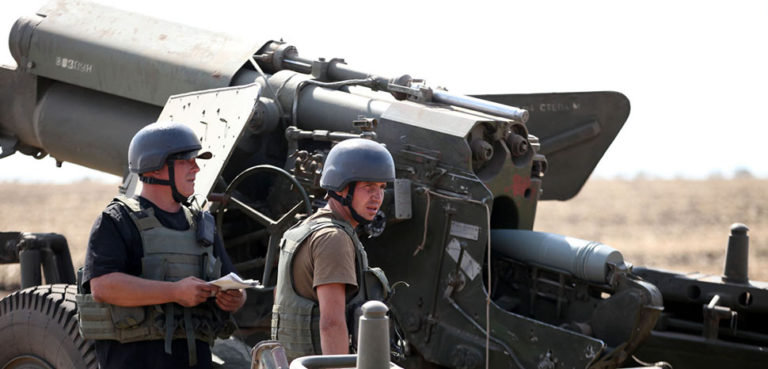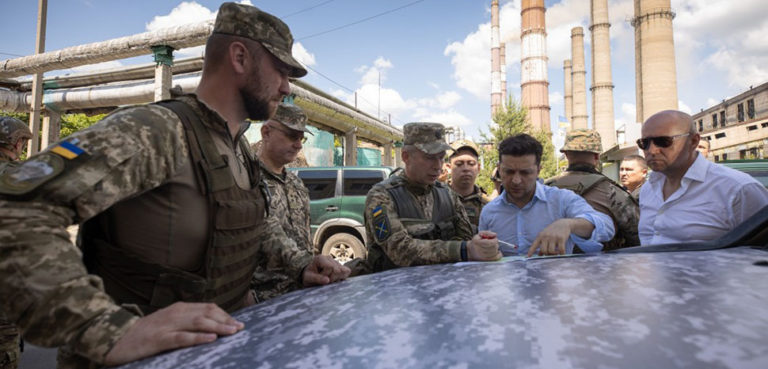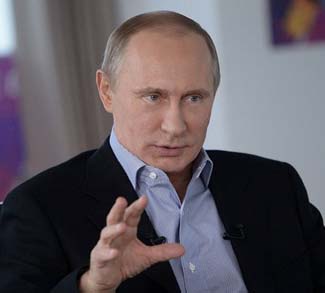The Kursk offensives, launched by Ukraine in August 2024 and January 2025, have been some of the boldest military moves in the ongoing war against Russia. With quick, aggressive pushes into Russian-held territory, these offensives were meant to challenge the idea of Russian military invincibility and shift the balance of power on several fronts. While the success of the first offensive gave Ukraine a much-needed morale boost and a symbolic victory, the long-term impact remains unclear. As Ukrainian forces continue their push in the second offensive, it’s becoming apparent that, despite its symbolic importance, the Kursk region offers limited economic and strategic value compared to the high-stakes areas in the east and south of the country. This conflict underscores the complex challenges Ukraine faces: defending its sovereignty while balancing limited resources, international support, and the heavy psychological toll of war.
The First Kursk Offensive: August 2024
The first Kursk offensive, launched on August 6, 2024, was a bold and unprecedented move by Ukraine into Russian territory. Ukrainian forces combined mechanized infantry and precision artillery to deliver a swift, well-coordinated attack that caught Russian defenders off guard. Within days, they had advanced deep into the Kursk region, capturing about 1,250 square kilometers, including the strategically important town of Sudzha. This marked a significant victory for Ukraine—not just militarily, but symbolically—as it demonstrated the country’s ability to challenge Russian forces on their own soil, defying Moscow’s carefully curated image of military dominance.
The offensive wasn’t just about taking territory; it had a clear strategic purpose. Ukraine aimed to force Russia to divert resources away from the eastern front, where heavy fighting in the Donbas had been placing enormous pressure on Ukrainian defenses. The region was a critical battleground, and Russia’s focus on it threatened to overwhelm Ukrainian forces. By striking deep into Russia, Kyiv hoped to compel Moscow to redeploy troops to defend its territory, easing the strain on the eastern front and potentially disrupting Russian offensives.
Initially, the offensive was celebrated as a major triumph, with Ukrainian forces moving rapidly and capturing significant ground. But as the weeks went on, cracks in the strategy began to emerge. Russia responded with overwhelming force, deploying approximately 50,000 additional troops to the region, including 12,000 North Korean soldiers reportedly sent as reinforcements under a controversial agreement. Backed by superior air support and strong logistical networks, Russian forces were able to regroup and mount a powerful counteroffensive. By October, they had reclaimed about half of the territory Ukraine had captured, effectively stalling the operation.
The primary limitation of the Kursk offensive was its failure to achieve its main goal: forcing Russia to divert its focus and resources away from the Donbas. Despite the incursion into its territory, Russia maintained its offensives in eastern Ukraine, continuing to gain ground in critical areas. The strain on Ukrainian resources, already stretched thin, was felt even more acutely as troops and equipment were diverted to Kursk, leaving other vital fronts more vulnerable.
By the time the operation drew to a close, many were left questioning whether the resources committed to Kursk might have been better used elsewhere, particularly in the defense of eastern Ukraine, where the stakes are much higher.
The Second Kursk Offensive: January 2025
On January 5, 2025, Ukraine launched its second offensive into Russia’s Kursk region, underscoring its commitment to maintaining pressure on Moscow. The operation comes at a time when the war is grinding on multiple fronts, with Ukraine striving to assert its ability to disrupt Russian operations despite ongoing challenges in defending key areas. Unlike the first offensive, this renewed effort reflects a more calculated approach, combining long-range missile strikes targeting Russian logistics with precise company-level ground assaults aimed at capturing key areas while minimizing direct confrontations with heavily fortified Russian positions.
The offensive is centered in the Sudzha region, where Ukrainian forces are attempting to break through Russian defenses and advance deeper into Kursk Oblast. Locations such as Berdin, Leonidovo, and Bolshoye Soldatskoye have become focal points of intense fighting as Ukraine strives to establish a stronger foothold in the region. Long-range strikes are disrupting Russian supply routes, ammunition depots, and transport hubs, making it harder for Moscow to reinforce its front lines. These strikes are coupled with coordinated ground operations, demonstrating an evolution in Ukraine’s ability to integrate different elements of its military campaign.
However, the broader strategic impact of the offensive is likely to be limited. Russia is responding with characteristic speed, deploying reinforcements and launching counterattacks to stabilize the front lines. Backed by mechanized units, artillery, and robust defensive positions, Russian forces are regrouping, intensifying the fighting in Kursk. Both sides are probably incurring heavy casualties, and what initially appeared to be a bold push is likely to devolve into another grinding, resource-intensive struggle.
The Complexities of Ukraine’s Kursk Offensive
The Kursk offensive reveals several critical challenges that complicate Ukraine’s efforts and raise questions about the effectiveness of its strategy. These challenges span operational, economic, diplomatic, psychological, and political dimensions, highlighting the complexities of sustaining a high-stakes war against a well-resourced adversary.
Resource Allocation and Eastern Front Vulnerability
As previously noted, one of the most pressing issues with the Kursk operations is the significant diversion of Ukrainian resources to support the campaign. Each instance has seen thousands of troops and large quantities of equipment, including mechanized units and artillery, redirected to Kursk in an effort to sustain the offensives. Consequently, this decision has left key areas in eastern Ukraine, particularly the Donbas, underdefended. During the first offensive, Russian forces seized the opportunity to intensify their operations in the east, making notable gains. Currently, amid the second offensive, they are advancing into important towns such as Toretsk and Kurakhove.
The inability to disrupt Russia’s offensives in the Donbas calls into question the effectiveness of Kursk as a diversionary operation. Instead of forcing Moscow to shift its focus, the first Kursk offensive inadvertently provided Russia with an opportunity to consolidate its gains in the east, further entrenching its control over a region critical to Ukraine’s economic recovery and far more significant in terms of leverage at the negotiating table.
Limited Economic and Strategic Value of Kursk
While the Kursk region holds symbolic significance, particularly as a demonstration of Ukraine’s ability to contest Russian territory, its economic value is relatively modest. Kursk plays a role in Russia’s agricultural production and serves as a gas transit hub, but its contributions are modest compared to the more pivotal importance of the Donbas. The Donbas has long been Ukraine’s industrial heartland, accounting for a substantial share of the country’s mining, steel production, and manufacturing output. Control over the region is crucial for Ukraine’s post-war reconstruction and long-term economic stability. This also applies to the land bridge connecting the Donbas and Crimea, which is not only vital for military logistics but also spans some of the most fertile agricultural land in Ukraine.
The Kursk offensive also highlights the region’s limited strategic value in potential negotiations. Assuming that Ukraine is able to retain this territory in the medium term, Kursk itself does not hold much weight in the broader dynamics of peace talks or territorial disputes. Unlike areas such as Donbas or Zaporizhzhia, which are rich in resources and crucial to both countries’ long-term interests, Kursk is primarily an agricultural region with some logistical importance. These factors make it far less consequential in shaping the terms of any future settlement.
The idea of using Kursk as a bargaining chip is complicated by the fact that its capture does not fundamentally alter the balance of power. Russia’s priorities remain firmly fixed on consolidating control over the Donbas and other regions critical to its political objectives of establishing a buffer between itself and NATO. The loss of territory in Kursk does not pose a significant threat to Russia’s war effort or its broader aims, especially since the Kremlin remains confident that it will be able to reclaim the lost territory in due course. This makes it easier for Moscow to dismiss Ukrainian gains in Kursk during negotiations, as the region and Kyiv’s limited success lack the kind of leverage needed to force meaningful concessions.
Psychological and Political Dimensions
The Kursk offensive also carries profound psychological and political implications, both within Ukraine and on the international stage. Domestically, the operations serve as a morale booster. The sight of Ukrainian forces advancing into Russian territory symbolizes defiance and resilience, offering a powerful counter-narrative to Russia’s portrayal of dominance. For a population enduring the hardships of war, the incursions provide a sense of hope and vindication.
However, as operations stall and reports of mounting casualties and limited gains emerge, public enthusiasm begins to wane. Questions arise about the costs of the operations, particularly as key areas in the east are lost or left vulnerable. Over time, the inability to achieve tangible results in Kursk shifts the domestic narrative, with some beginning to question whether the campaign is worth the sacrifice.
Internationally, the Kursk offensive reinforces Ukraine’s narrative of resistance, showcasing its ability to challenge Russia and maintain momentum in the conflict. This helps solidify support from Western allies, many of whom view the incursions as evidence of Ukraine’s determination and tactical ingenuity. However, the offensives also raise concerns among some partners about potential overextension and escalation. With Ukraine relying heavily on Western military aid, questions regarding the allocation of resources and the strategic soundness of the Kursk campaign become more pronounced.
Conclusion
In the end, the Kursk offensive proves to be a mix of boldness and tough lessons for Ukraine. While the initial successes give Ukraine a much-needed morale boost and demonstrate to the world that it can challenge Russia on its own turf, the long-term value of these operations is more complicated. The Kursk region, despite its symbolic importance, offers little in terms of strategic or economic advantage, especially when compared to the critical areas in the east. Diverting resources to Kursk tends to leave vital parts of Ukraine vulnerable, particularly in the Donbas.
The offensives expose the harsh reality of this war: Ukraine is fighting on multiple fronts with limited resources, and every decision has consequences. The challenge of balancing aggressive tactics with the need to defend key territories is becoming clearer, especially as the costs of the Kursk campaigns continue to rise. For Ukraine, the real question moving forward is whether the sacrifices made in Kursk will pay off in the end, or if the focus should shift back to defending the heart of the country. The Kursk offensive remains a powerful symbol of Ukraine’s determination, but the true test will be how they navigate the difficult road ahead and whether Kyiv can turn these bold moves into lasting strategic gains.




